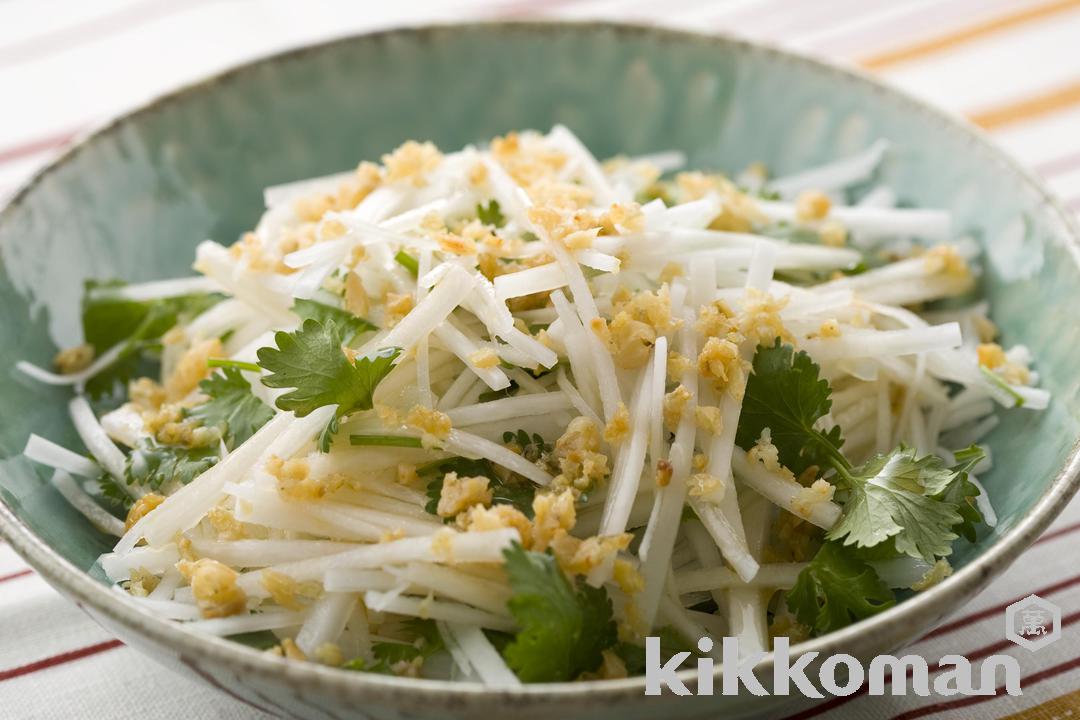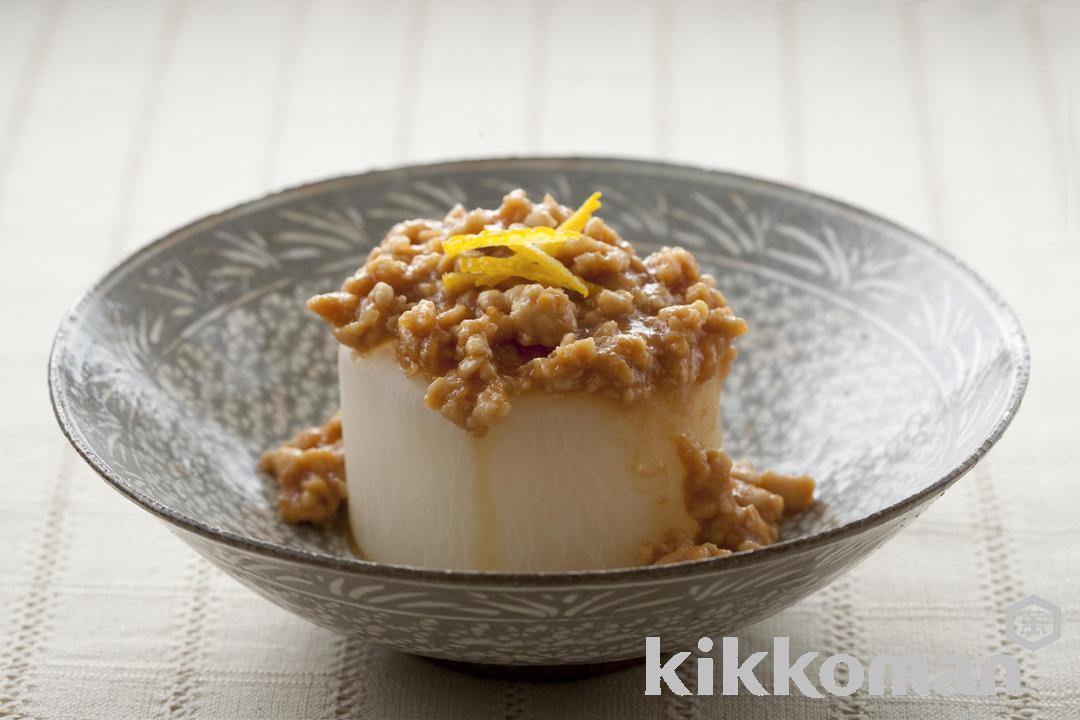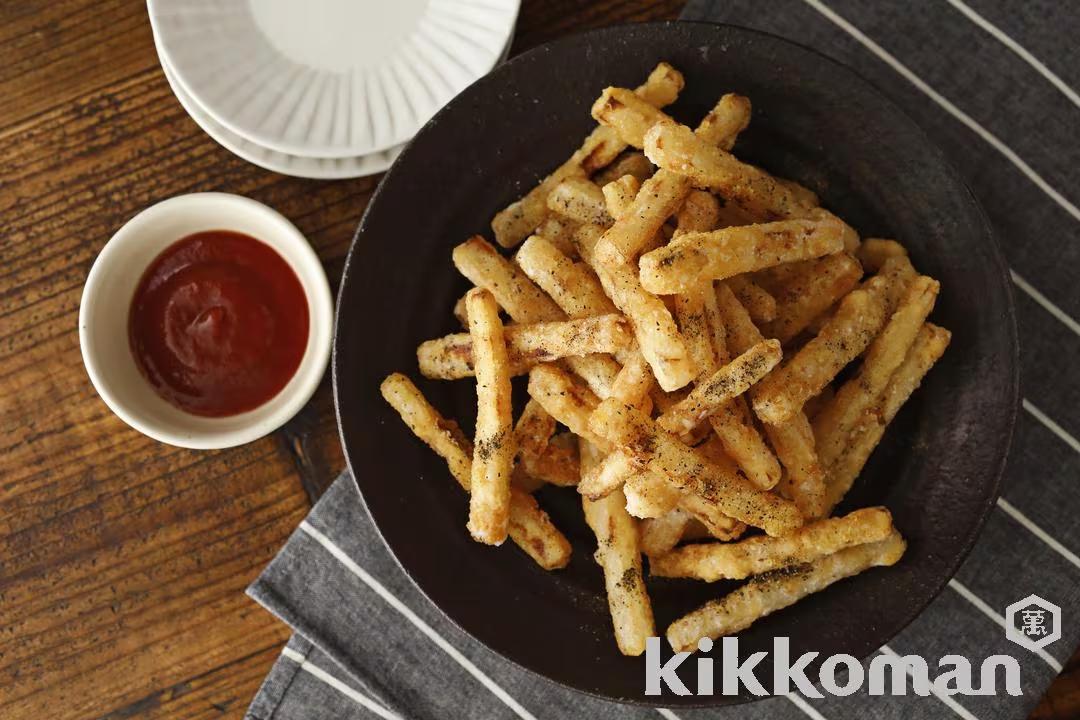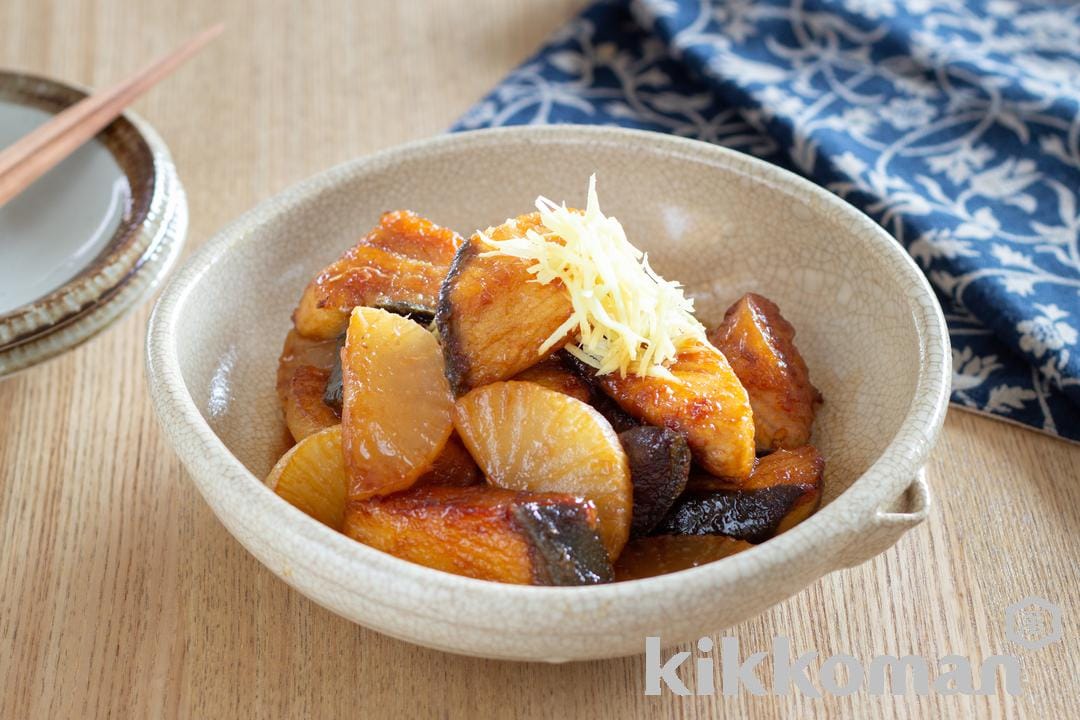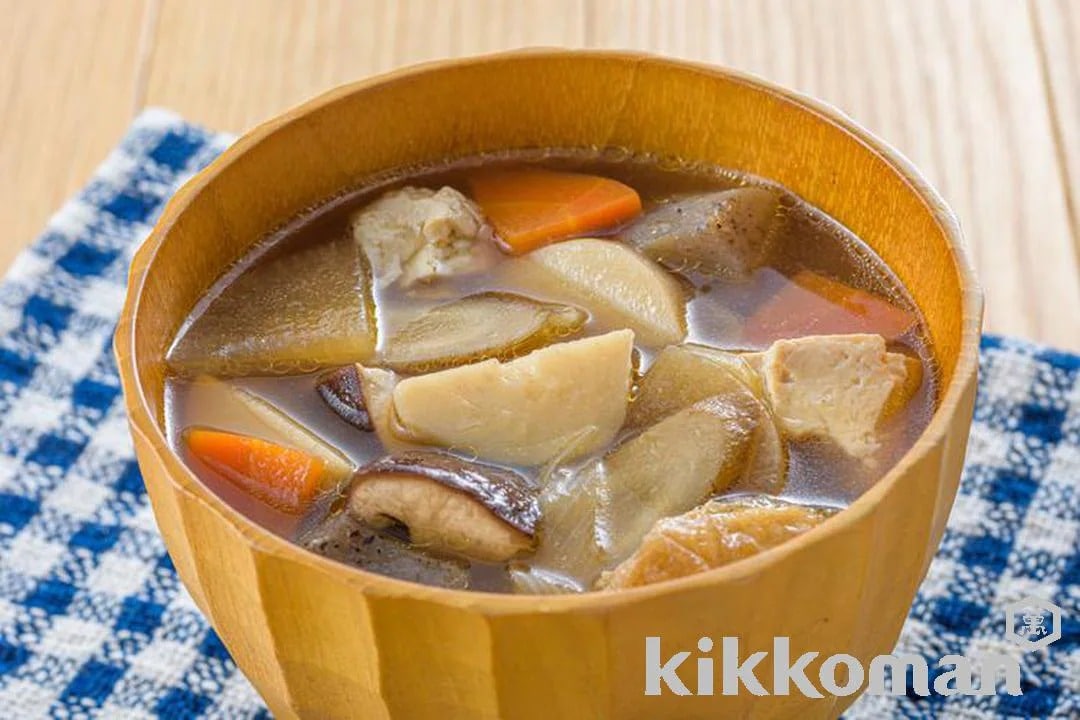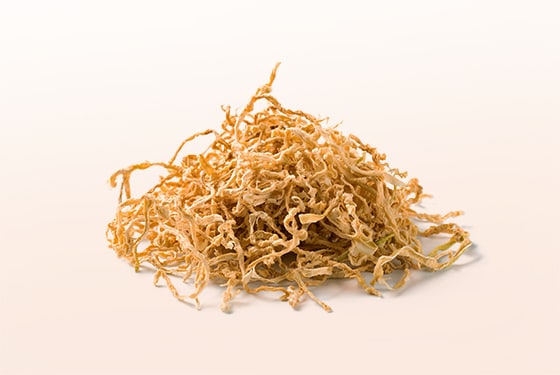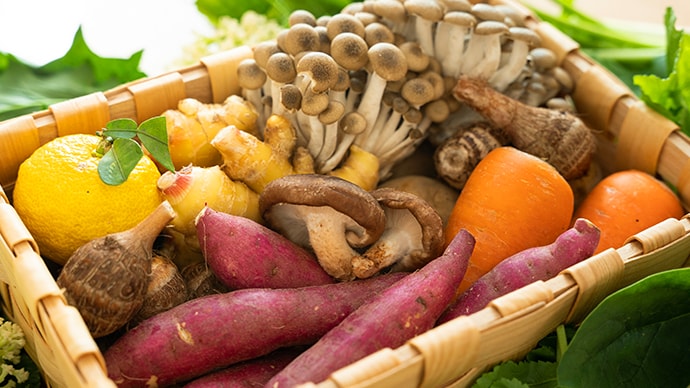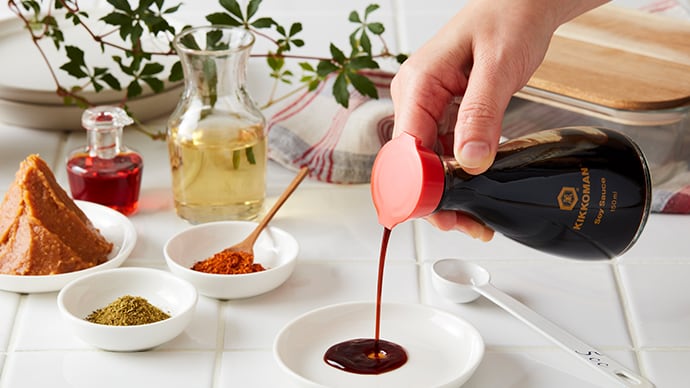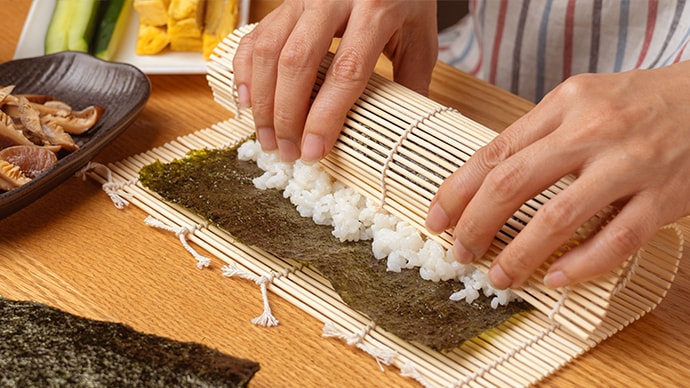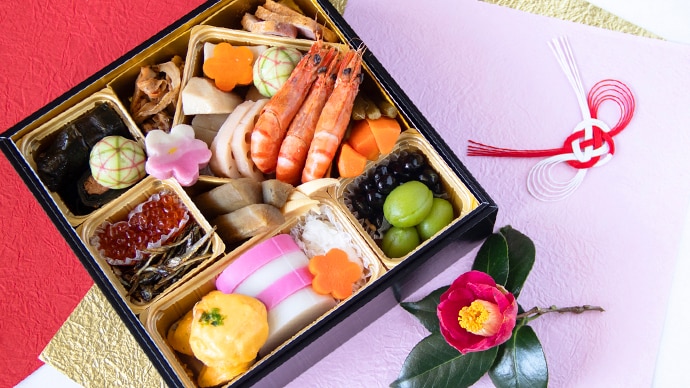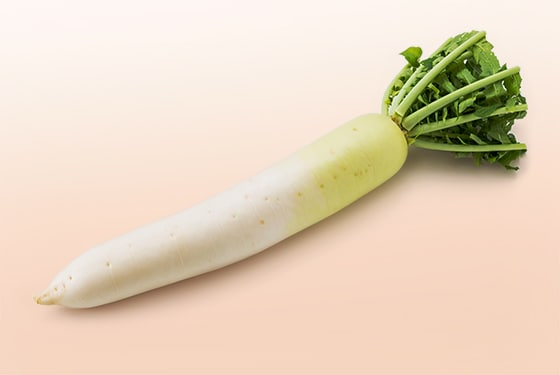
A white root vegetable known for its spiciness and bitterness, popular as an ingredient in oden (Japanese hot pot with fish cake)
What is daikon radish?
Daikon radish (だいこん in Japanese) is a white root vegetable that is in season during the fall and winter. It can be eaten in various ways, such as grated daikon or as an ingredient in oden. The part near the leaves is slightly firm and sweet, making it great for salads or vegetable sticks. The middle part has a good balance of moisture and firmness, so it is suitable for stews, daikon steak, and oden. The bottom part is spicier and less moist, making it ideal for grated daikon and pickles.

Nutrition facts
The daikon radish root is 95% water and low in calories. It contains potassium, which helps the body to excrete sodium and regulate blood pressure. This helps to reduce swelling and prevent high blood pressure. Daikon radish is good to eat it together with foods that are high in salt.
Daikon radish also contains diastase, an enzyme that aids digestion, and promotes the breakdown of starch in particular. This helps to prevent stomach upset, heartburn, and indigestion. To take advantage of the effects of diastase, daikon is recommended to be eaten raw, for example as grated radish, without cooking it.
The leaves of radish are rich in nutrients, including beta-carotene, vitamin C, vitamin K, folic acid, calcium, and dietary fiber. When the leaves are fried in oil, the beta-carotene contained in the leaves is fat-soluble, so the absorption rate increases.
Storage to prevent food loss
To prolong its freshness, cut daikon into leaf, upper, middle, and lower sections, wrap the cut ends with paper towels, place them in a plastic bag, and store them upright in the refrigerator. You can also freeze grated daikon or cut it into pieces for stews and freeze them in a plastic bag.
Trivia
Drying daikon concentrates its nutrients and extends its shelf life. Cut it into thin slices or strips in your preferred size and shape, place it on a sieve, and dry it in a well-ventilated area. It's great for use in miso soup or stews.
Cooking Basics
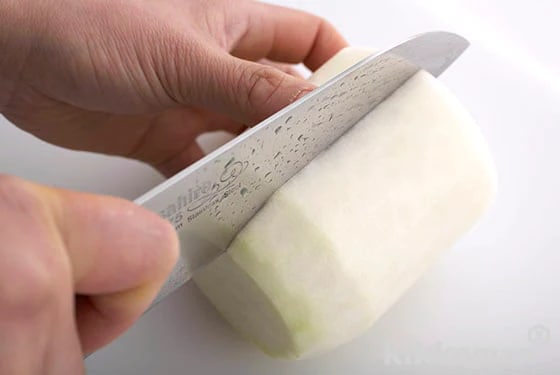
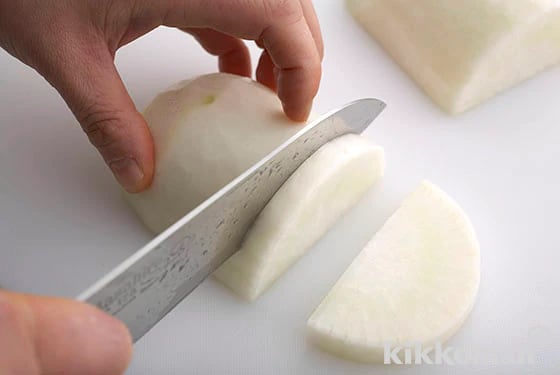
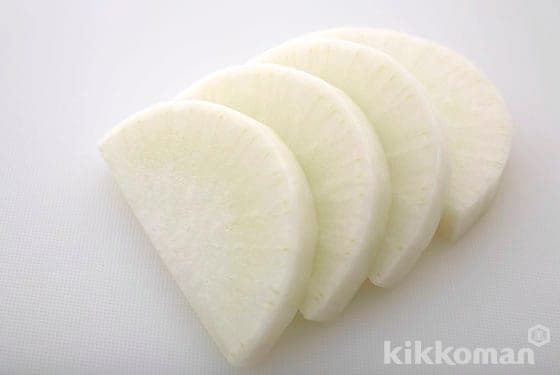
Peel the daikon radish, cut vertically in half, then cut each half into 4 to 5 cm (1.5 to 2 in.) width slices from end to end.
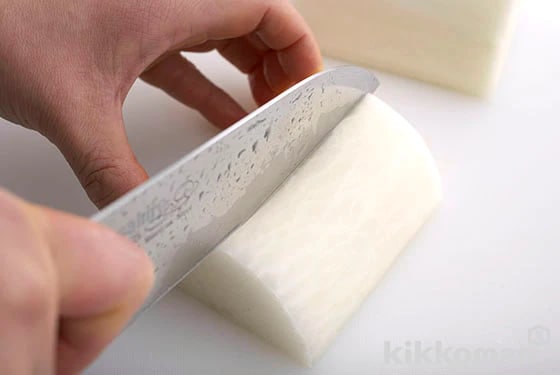
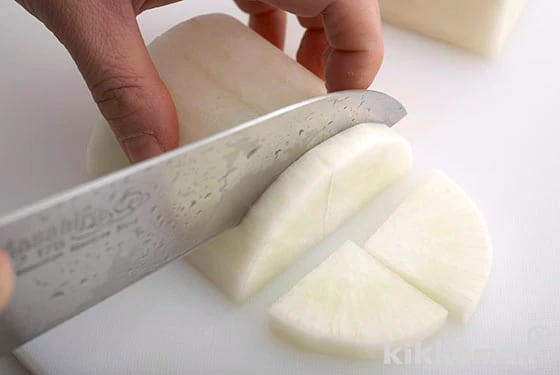
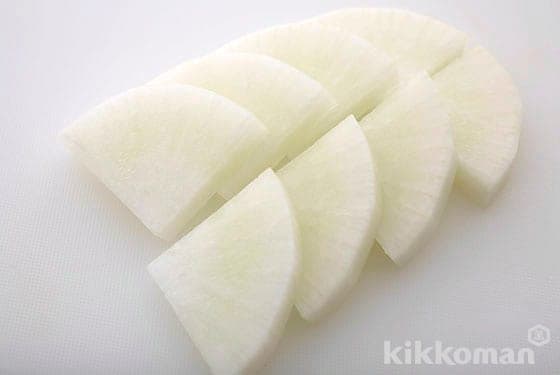
Peel the daikon radish, cut into half vertically and then while holding both halves together with your hand, slice at consistent widths from end to end.
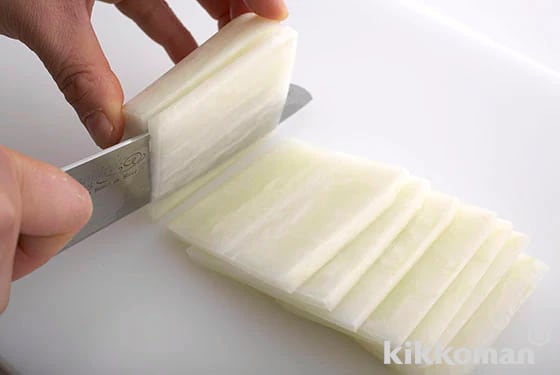
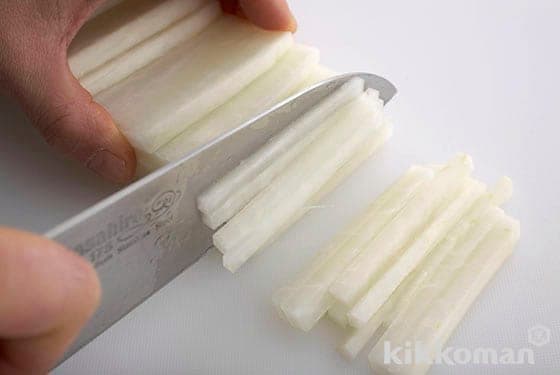
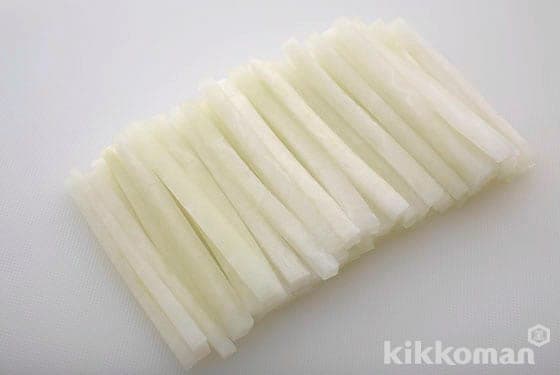
Peel the daikon radish, cut into 4 to 5 cm (1.5 to 2 in.) width pieces, and slice these each into planks around 3 mm (0.1 in.) wide, gradually sliding and stacking these planks. Lastly, thinly cut into widths of around 3 mm (0.1 in.).
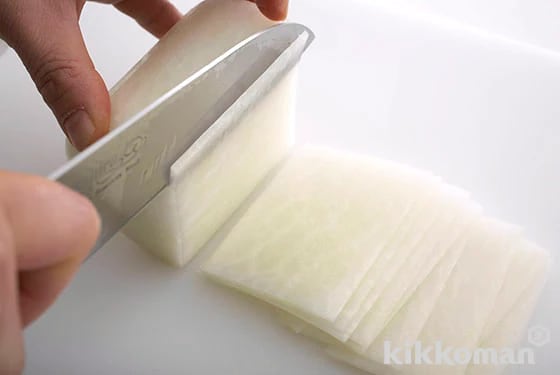
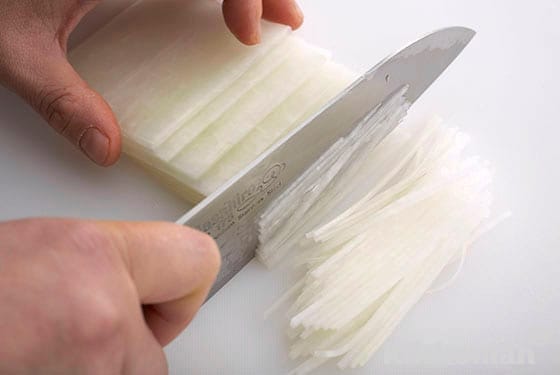
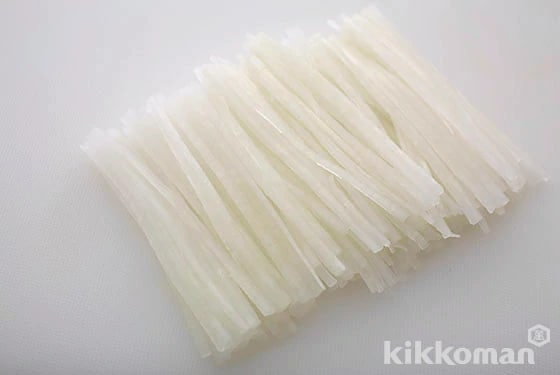
Peel the daikon radish and cut into 4 to 5 cm (1.5 to 2 in.) long pieces. Slice into 1 to 2 mm (0.1 in.) thick planks, stack by sliding these gradually, and then slice up into thin sticks from end to end.
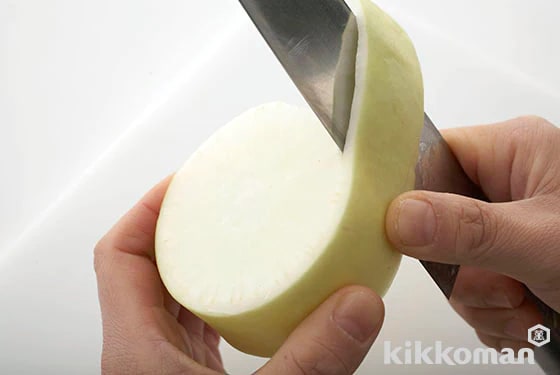
Thickly peel the skin of daikon radish to remove the fibrous portion that runs vertically near the skin and will become stringy when cooked. It will depend on each daikon radish, but usually peeling off 3 to 4 mm (0.2 in.) thick skin is recommended. The peeled skin can be used for "kinpira", a Japanese sauteed and simmered dish flavored with soy sauce, mirin and sugar.
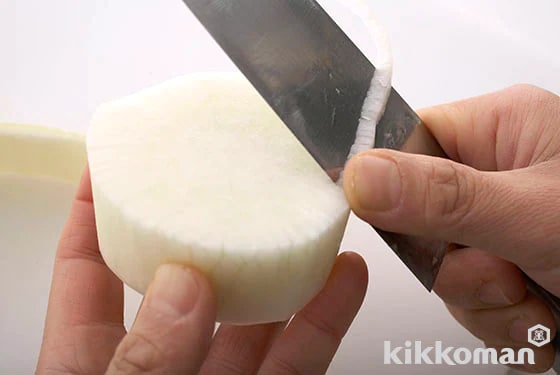
For simmered dishes such as broiled daikon or oden (a Japanese dish containing all kinds of ingredients cooked in broth and seasoned with soy sauce), the corners should be chamfered to prevent them from splitting. The aim is to take a knife and trim off the straight edges.
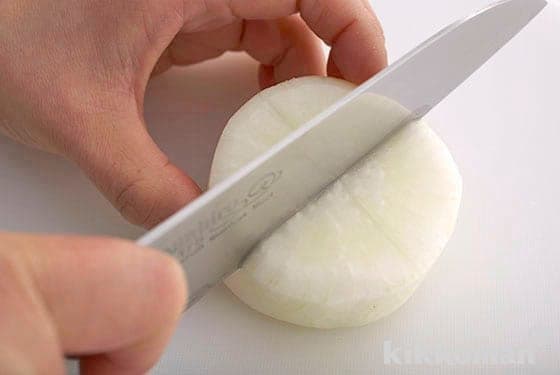
Make a cross-cut into the back side of a round-cut daikon with a knife for faster cooking and better absorption of flavors. The cut depth should be about 1/3 to 1/2 of the round-cut thickness.
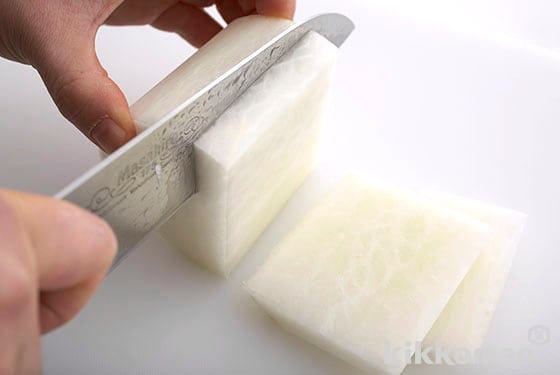
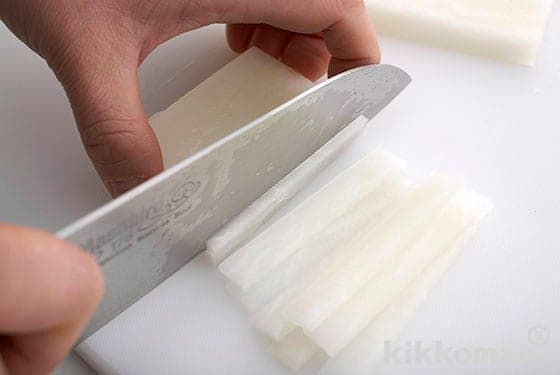
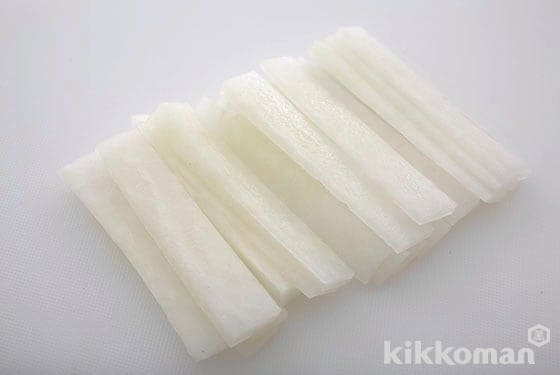
Cut into 4 - 5 cm (1.6 to 2 in.) long pieces, peel, then cut lengthwise into 1 cm (0.4 in.) thick planks. Lastly, cut each slice lengthwise into 2 mm (about 0.1 in.) thick rectangular sticks.
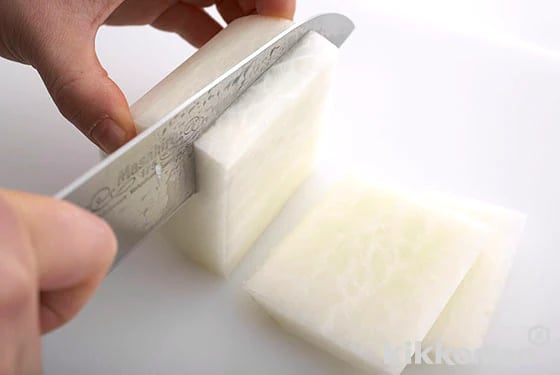
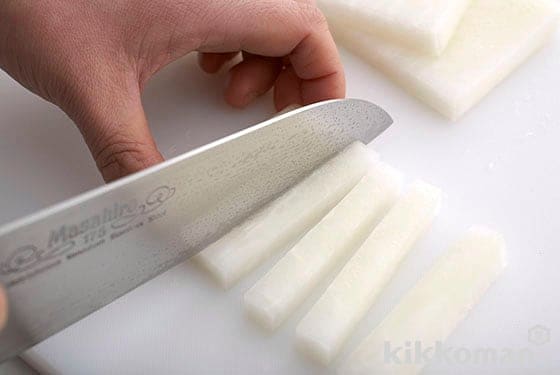
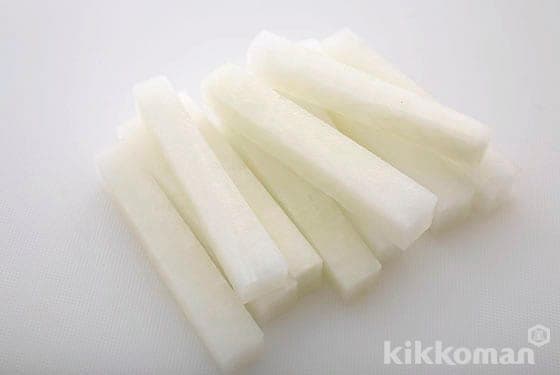
Cut into 4 - 5 cm (1.6 to 2 in.) long pieces, peel the skin, then cut lengthwise into 1 cm (0.4 in.) width planks. Lastly, cut each plank lengthwise into 7 mm to 1 cm (0.3 to 0.4 in.) thick long sticks.
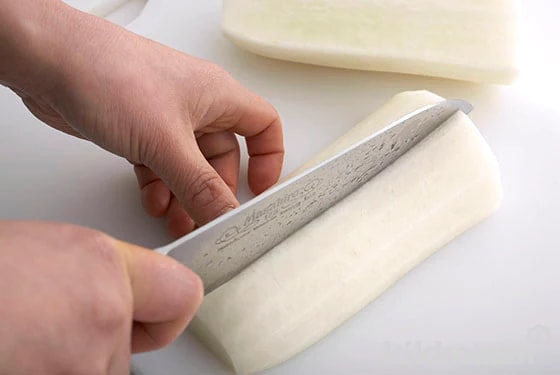
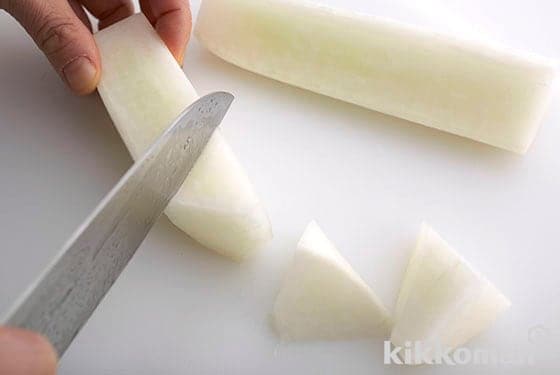
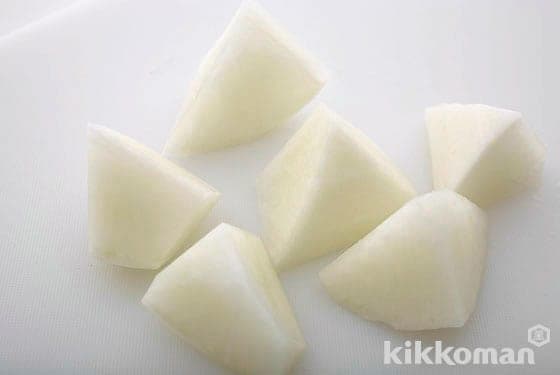
Peel the daikon radish and cut in half lengthwise, or cut into quarters lengthwise if large. From the edge, cut up irregularly into bite-size pieces.
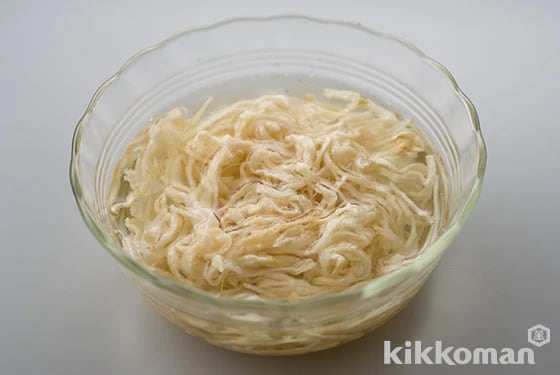
Place the dried daikon radish strips into a bowl, add enough water to cover each strip. Rub together to wash until all bubbles are released. After removing excess water, soak in enough water to cover all strips for about 20 minutes to rehydrate. Rehydrating time will vary depending on the thickness and condition of the dried daikon radish strips.


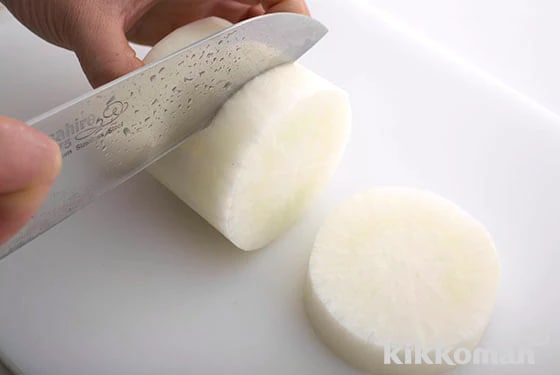
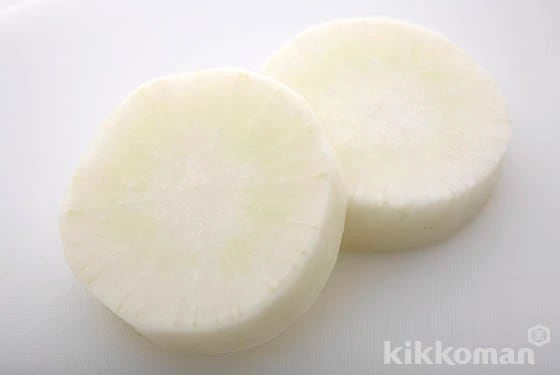
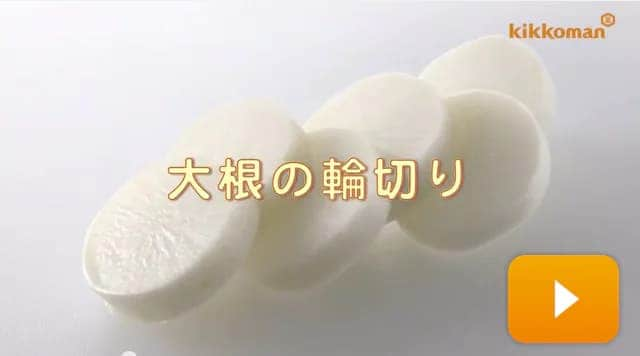
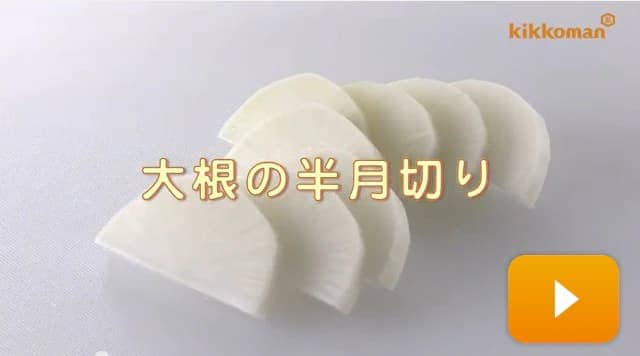
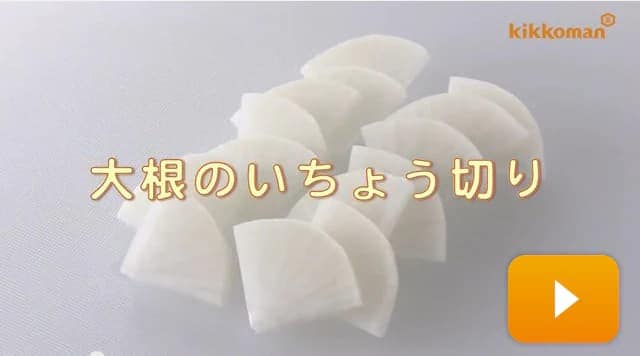
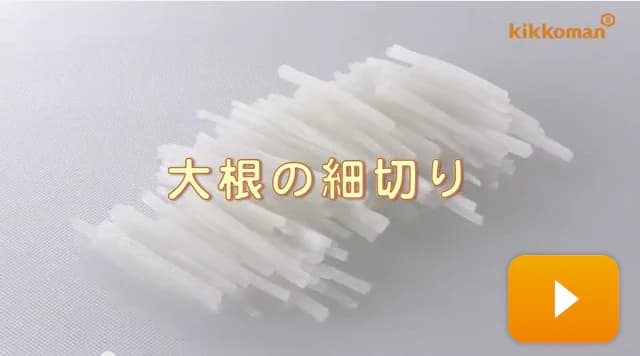
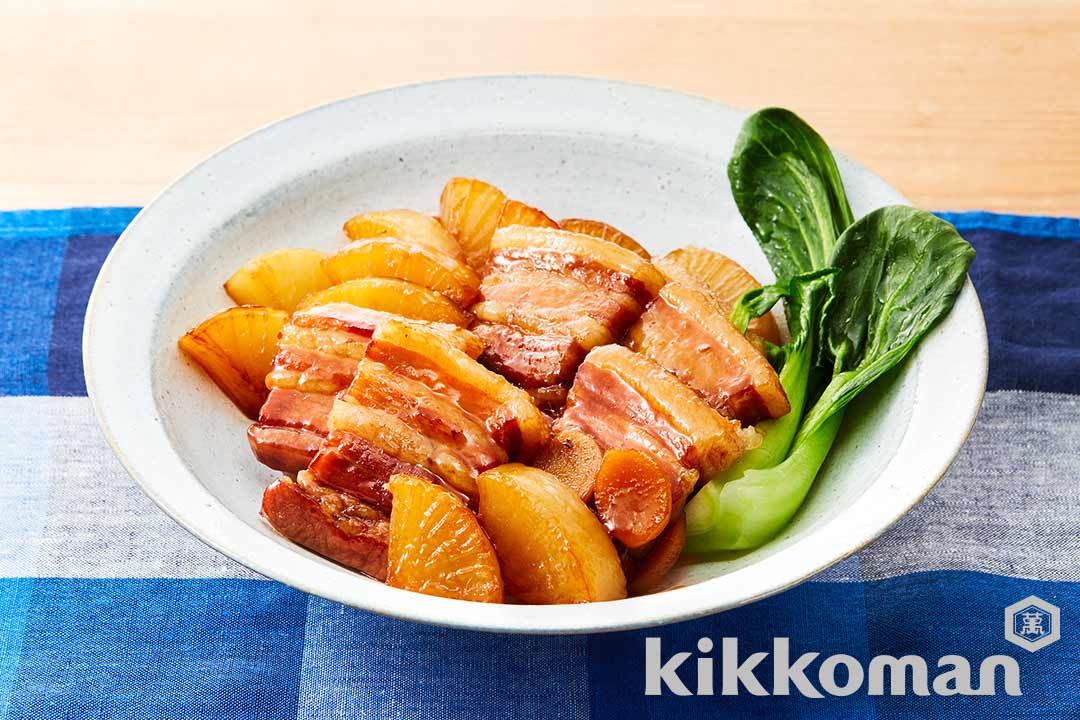
 35min
35min 537kcal
537kcal 600mg
600mg